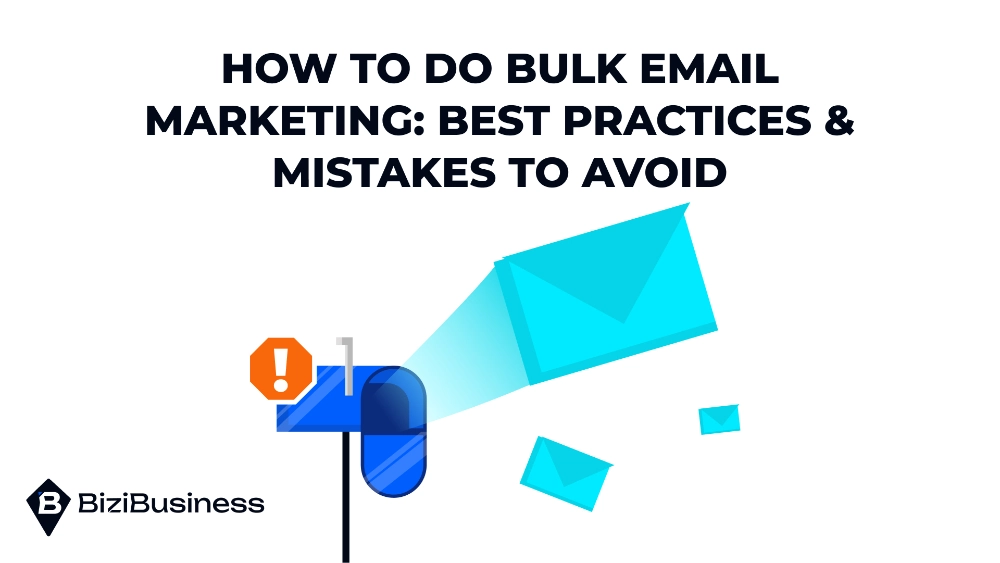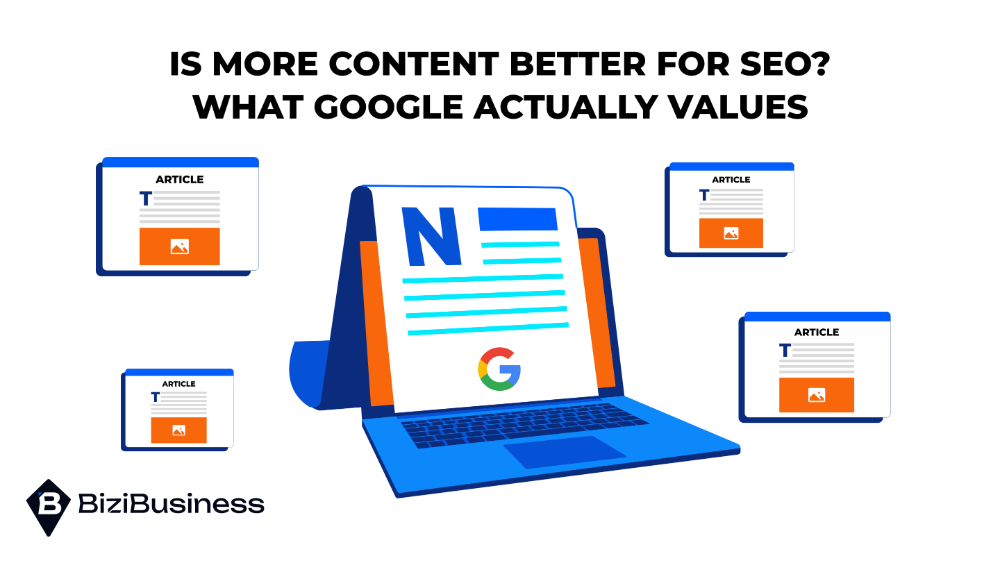Contents
Learn how to do bulk email marketing the right way. Avoid spam filters, follow best practices, and improve deliverability with this guide.
Bulk email marketing is the process of sending a single message to a large number of recipients at once. It’s often used by businesses to promote products, share updates, or nurture leads through newsletters and campaigns. But if you’re wondering how to do bulk email marketing effectively, it’s important to understand the distinction between permission-based outreach and spam.
Unlike cold emails or unsolicited messages, legitimate bulk email marketing relies on opt-in contacts who’ve agreed to hear from you. This builds trust and improves deliverability. Done right, it offers three core advantages: scale, automation, and measurable reach. It allows businesses to communicate at volume without losing personalization or efficiency.
What Is Bulk Email Marketing and When Should You Use It?
Bulk email marketing refers to sending one email to many recipients at once, typically through an email service provider (ESP). It’s a strategy built for communication at scale, where consistent messaging and efficiency matter.
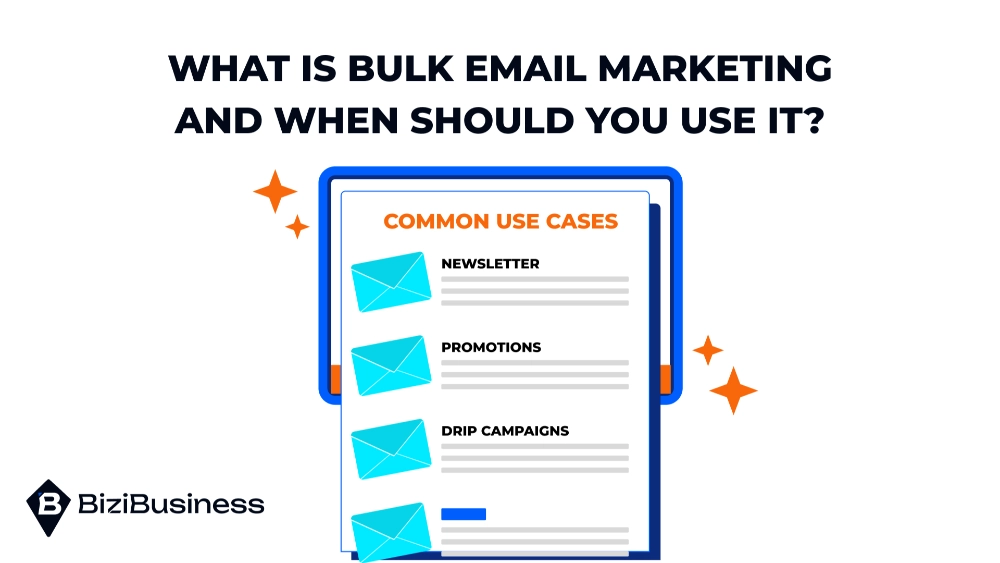
Common Use Cases
- Newsletters: Regular updates to your subscribers about news, content, or company updates.
- Promotions: Special offers, product launches, or seasonal campaigns to drive sales.
- Drip Campaigns: Automated sequences triggered by user behavior or time delays, often used for onboarding or nurturing leads.
Who Is It For?
- Businesses: eCommerce brands, SaaS companies, agencies… Anyone looking to market at scale.
- Creators: Bloggers, educators, and course creators who want to grow and monetize an audience.
- Nonprofits: Organizations that need to keep donors and supporters engaged without personal outreach every time.
But before hitting “send,” you need a clear plan for compliance and deliverability. Without proper opt-in methods and email infrastructure, your messages could land in spam or worse, violate data protection laws. Starting with consent, clean lists, and a trusted sending platform ensures your emails actually reach people and stay within the rules.
Step 1: Prepare Your Email List Properly
The success of any bulk email campaign starts with the quality of your list. If you’re sending to people who never agreed to hear from you, don’t expect results; expect spam complaints.
Permission-Based vs. Scraped Lists
A permission-based list includes contacts who have explicitly opted in to receive your emails. This could be through a signup form, gated content, or a purchase checkout. Scraped lists, on the other hand, are gathered without consent, usually by bots or shady data vendors. Using them not only hurts deliverability but can also violate laws like GDPR or CAN-SPAM.
Segmenting Your Audience
Not every subscriber should receive the same message. Segmentation allows you to group your audience based on behavior, demographics, or engagement level. For example, you might send one version of a promo to recent buyers and another to inactive users. This improves open rates and conversions while keeping your emails relevant.
Email List Hygiene
Even a legitimate list goes stale over time. That’s why ongoing email list hygiene is essential. Remove:
- Bounced addresses
- Unsubscribes
- Inactive users who haven’t opened in 6–12 months
Clean lists improve sender reputation, lower bounce rates, and keep you out of spam folders. Quality always beats quantity.
Step 2: Choose the Right Bulk Email Marketing Tools
To run a scalable and reliable campaign, you need the right software. Choosing from the many bulk email marketing tools available can feel overwhelming. The key is to match features with your specific goals.
Top Platforms Compared
- Mailchimp: Known for its ease of use and templates. Ideal for beginners and small businesses. Pricing increases quickly with list size.
- Brevo (formerly Sendinblue): Offers strong automation features and transactional emails. Includes a generous free plan.
- Moosend: Budget-friendly platform with advanced segmentation and real-time analytics. Often used by eCommerce brands.
- Mailmodo: Unique for supporting interactive AMP emails. Useful for embedding forms or surveys directly in the message.
What to Look For
When evaluating tools, focus on these key features:
- Automation. Create sequences triggered by user behavior or time-based actions.
- List Management. Look for tools that support easy segmentation and list cleaning.
- Analytics. Track performance using metrics like open rate, click-through rate, and bounce rate.
- Deliverability Help. Some platforms provide guidance for domain setup and sender reputation.
The right tool will help you send campaigns efficiently, stay compliant, and understand what’s working. Price matters, but capability matters more.
Step 3: Build Compliant, High-Performing Campaigns
Even the best email list and platform won’t deliver results without a well-structured message. A bulk email should be clear, compliant, and designed for engagement.
Anatomy of a Bulk Email
- Subject Line: The first thing people see. Keep it concise, relevant, and curiosity-driven. Avoid spammy phrases like “Buy now” or “Act fast.”
- Preview Text: The snippet that shows next to the subject in most inboxes. Use it to reinforce your message or add urgency.
- Body Content: Focused, scannable, and valuable. Use short paragraphs, bullet points, and a consistent tone.
- Call to Action (CTA): Clear, visible, and placed early. Guide readers to click, sign up, or reply.
HTML vs Plain Text
HTML emails allow for branding, images, and styling, which can boost engagement. But plain text emails often feel more personal and are less likely to be flagged by filters. Most platforms allow you to send both formats in a single campaign to cover all bases.
Personalization and Sender Reputation
Using the recipient’s name, behavior, or preferences helps increase relevance and open rates. Just as important is your sender reputation—this includes your domain setup, past engagement rates, and complaint levels. Poor reputation can send your emails straight to spam.
To dive deeper into campaign setup and technical tips, check out this guide: How to Set Up an Email Marketing Campaign
Step 4: Avoid Spam Filters & Follow Deliverability Best Practices
One of the biggest challenges with bulk email is staying out of the spam folder. If your messages don’t land in the inbox, it won’t matter how good your content is. Here’s how to send bulk email without spam issues disrupting your results.
Set Up Email Authentication
Email authentication builds trust with mail servers and improves deliverability. You need to configure:
- SPF (Sender Policy Framework): Verifies that your IP is authorized to send emails for your domain.
- DKIM (DomainKeys Identified Mail): Adds a digital signature to verify content integrity.
- DMARC (Domain-based Message Authentication, Reporting and Conformance): Sets rules for how servers handle unauthenticated emails.
Control Frequency and Warm Up New Domains
Don’t overwhelm your list. Sending too often can annoy recipients and increase unsubscribes. If you’re using a new domain or IP, start slow. Send small batches first to “warm up” your reputation before scaling.
Avoid Spam Trigger Words
Certain phrases can flag your email as spam. These include:
- “100% free”
- “Act now”
- “Click here”
- “Lowest price” Use natural language, and test your email through a spam checker before sending.
For a broader list of best and worst practices, refer to this breakdown: Do’s and Don’ts Email Marketing You Must Know
Step 5: Test, Track, and Optimize
Effective bulk email marketing is never “set it and forget it.” The best senders constantly test, monitor, and refine their approach. This not only improves engagement but also supports email deliverability best practices by keeping your content fresh and relevant.
A/B Testing
A/B testing lets you compare two versions of a single element to see what performs better. You can test:
- Subject lines to increase open rates
- Send times to find when your audience is most active
- Email content such as layout, CTAs, or tone
Only test one variable at a time to get accurate insights.
Key Metrics to Monitor
- Open Rate: Signals how well your subject line and timing are working
- Click-Through Rate (CTR): Shows how engaging your content and CTA are
- Bounce Rate: High bounces can harm your sender reputation
- Unsubscribe Rate: Indicates if your messaging or frequency needs adjustment
Monitoring these metrics helps you spot problems early and refine your strategy before issues affect deliverability.
To explore this in more depth, see: How to Measure Email Marketing Success: 10 Metrics to Track
Common Mistakes to Avoid in Bulk Email Campaigns
Even with the right tools and intentions, many senders fall into patterns that reduce results or hurt their sender reputation. Avoiding these common missteps is just as important as following best practices.
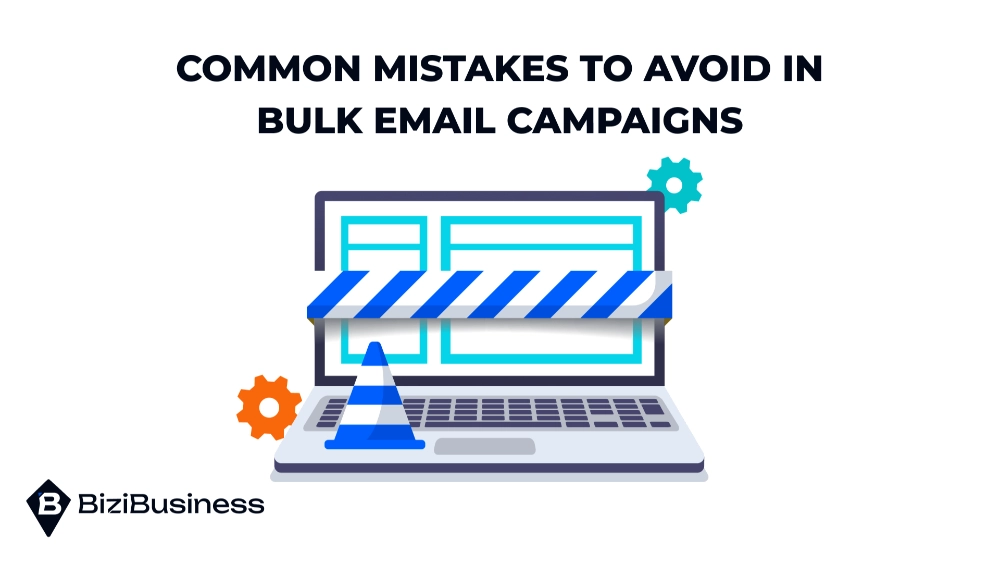
1. Sending Without Segmentation
Blasting the same email to your entire list rarely works. Without segmentation, your message may feel irrelevant to large parts of your audience, leading to lower engagement and more unsubscribes.
2. Ignoring Mobile Responsiveness
A large percentage of emails are opened on mobile devices. If your message doesn’t display properly on a small screen, it won’t be read. Use mobile-friendly templates and test across devices before sending.
3. Using Purchased or Unverified Lists
Buying email lists might seem like a shortcut, but it can damage your domain reputation and violate regulations. Always use permission-based lists with proper verification.
4. Not Cleaning the List Regularly
Dead addresses and unengaged contacts drag down your metrics. Failing to remove them can lead to high bounce rates, which damage your deliverability over time.
5. Repeating the Same CTA or Design Every Time
If every email looks the same or uses the same call to action, reader fatigue sets in. Mix up your design, layout, and message structure to maintain interest and engagement.
FAQs
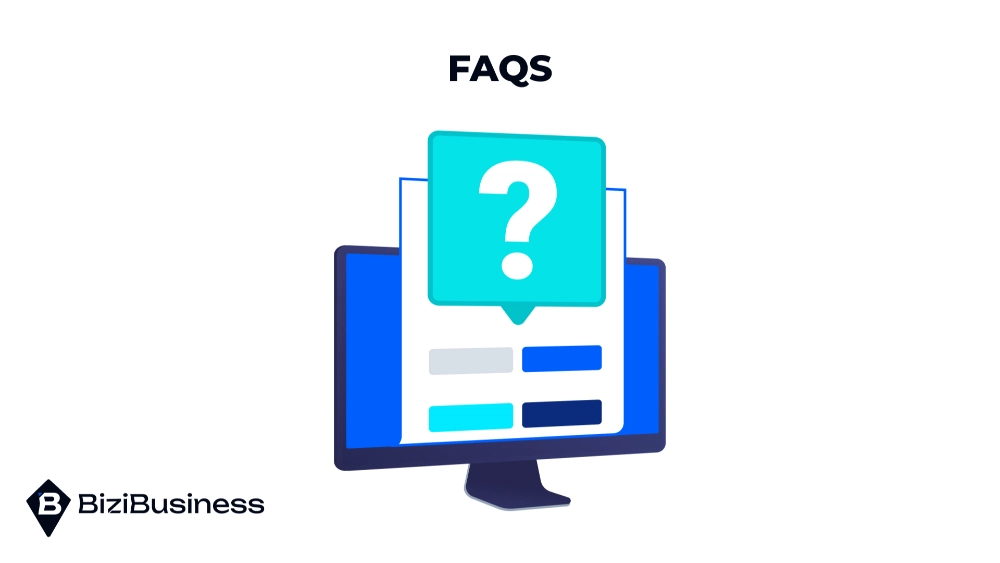
Can I use Gmail or Outlook to send bulk emails?
Technically, yes, but it’s not recommended. Gmail and Outlook are not built for mass emailing. They have strict sending limits and lack essential features like list management, automation, and analytics. Using them for bulk email can also trigger spam filters or lead to account suspension. It’s better to use dedicated bulk email marketing tools for professional campaigns.
Is bulk email marketing legal?
Yes, but only when done with proper consent and in compliance with local laws. You must follow regulations like CAN-SPAM, GDPR, or CASL, depending on your audience location. This typically means getting opt-in permission, offering a clear unsubscribe option, and including your business’s physical address in every email.
What’s the best time/day to send bulk emails?
This varies depending on your audience, but most research shows that mid-week mornings (Tuesday to Thursday between 9–11 AM) often deliver higher open and click rates. The best approach is to A/B test your send times and find what works best for your specific list and industry.
Conclusion
Bulk email marketing can be one of the most efficient channels for reaching large audiences—when done correctly. The key takeaways are clear: build a clean, permission-based list, choose reliable tools, focus on strategic content, and continually test and optimize. Most importantly, follow email deliverability best practices to avoid the spam folder.
If you’re still wondering how to do bulk email marketing the right way, remember it’s not just about sending volume. It’s about sending value. With the right setup, structure, and ongoing effort, bulk campaigns can drive real ROI and deepen audience engagement.
Explore our related guides, tools, and tutorials to go even further with your email strategy at BiziBusiness.
